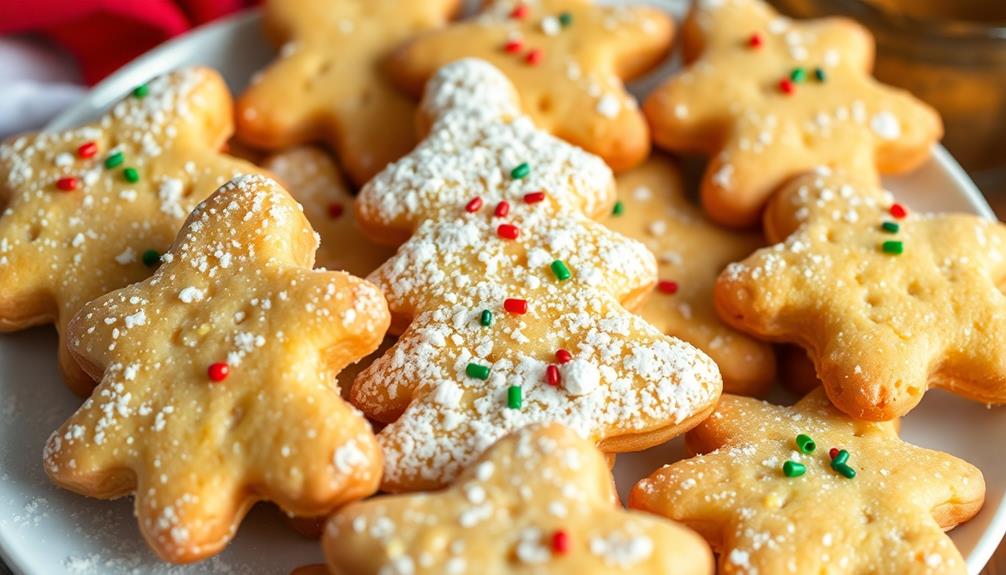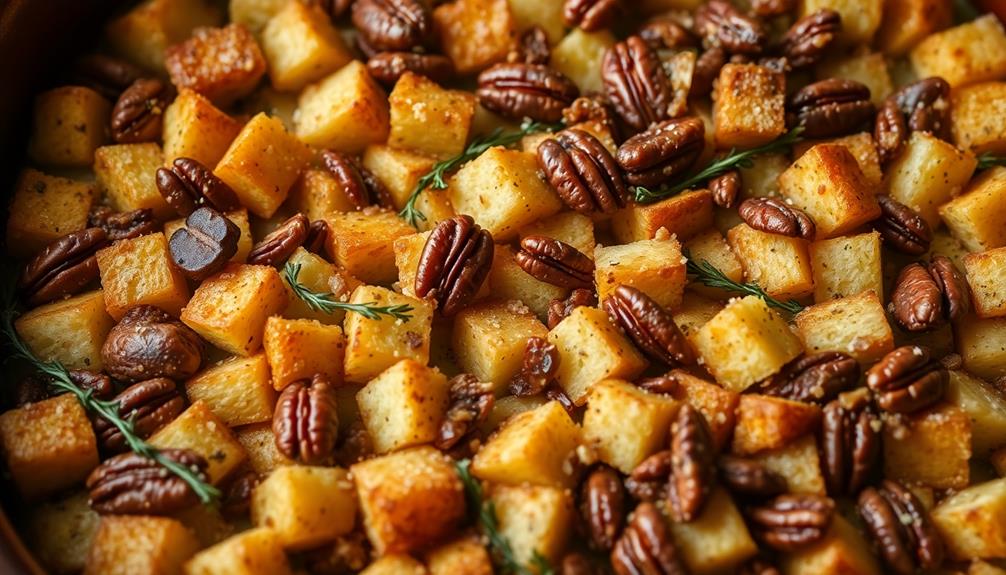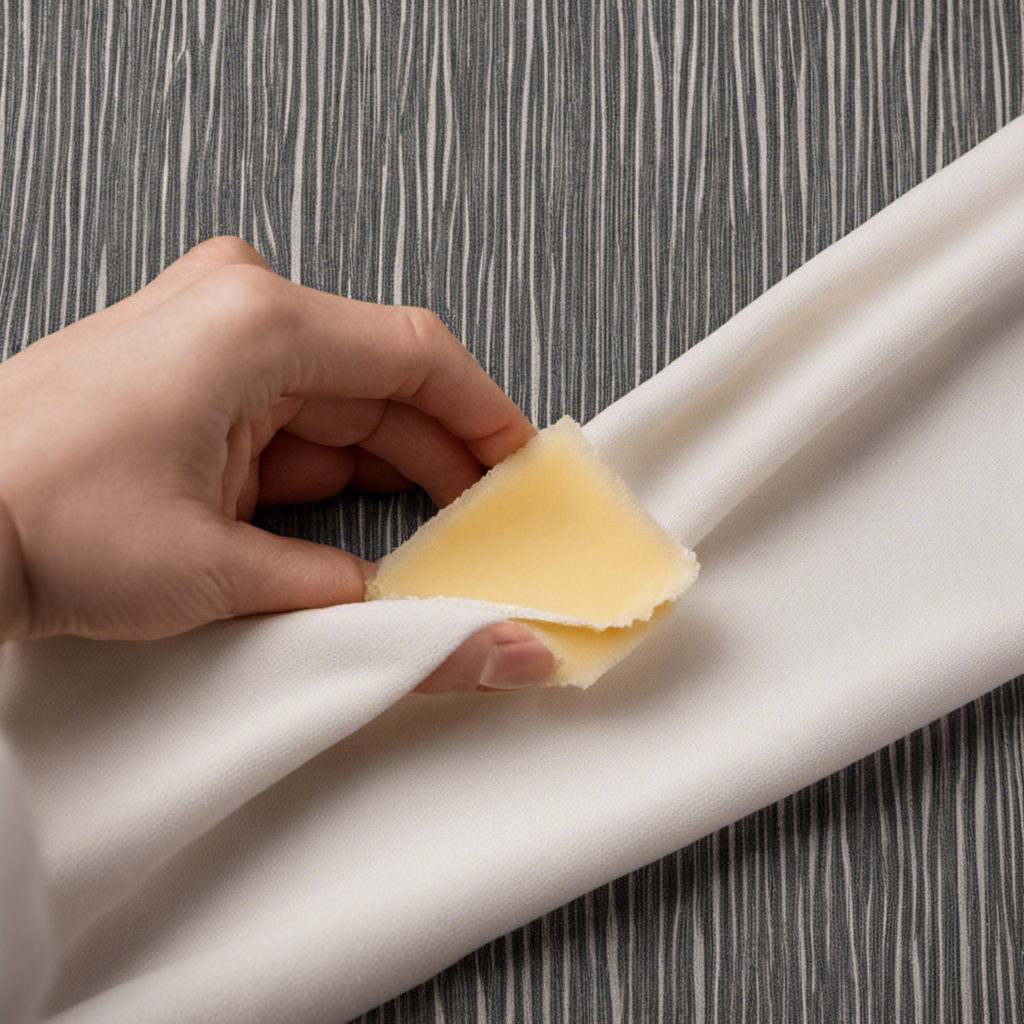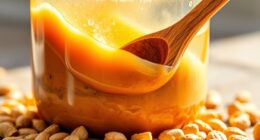Christmas butter cookies are the quintessential festive treat that will bring joy to your holidays! These rich, buttery delights originated in Northern Europe as part of beloved Christmas traditions. Families would gather to craft the cookies, rolling, cutting, and decorating them with warm spices and festive flavors. Today, this beloved ritual has spread globally, becoming a staple in Christmas celebrations worldwide. With a simple yet delectable recipe, these crisp and tender cookies pair perfectly with a soothing cup of herbal tea, creating a cozy and indulgent experience. Crafting these cherished cookies is a wonderful way to capture the spirit of the season – and there's more to discover about their cherished history and preparation.
Key Takeaways
- Christmas butter cookies originate from Northern Europe and have become a beloved tradition in global holiday celebrations.
- The rich, buttery flavor and delicate texture of these cookies make them a popular festive treat.
- The baking process of these cookies fosters a sense of accomplishment and creates lasting memories with loved ones.
- Decorating the cookies adds visual appeal and contributes to the overall holiday spirit.
- Sharing and savoring these cookies enriches the holiday experience and brings joy to the celebrations.
History
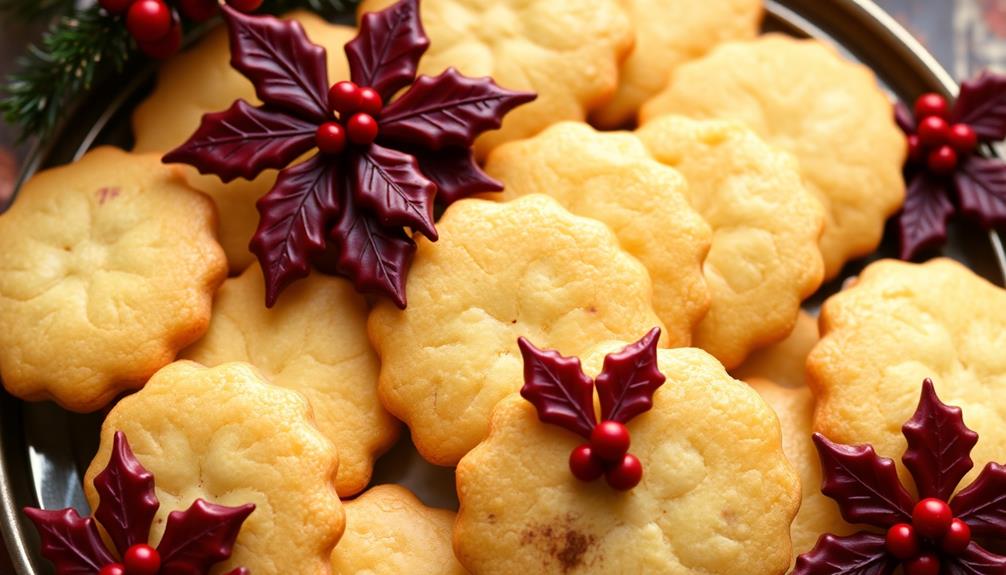
Originating in Northern Europe, butter cookies have long been a cherished part of the Christmas tradition.
These delightful treats have roots dating back centuries, with early recipes surfacing in Scandinavian and German baking guides. As the holidays approached, families would gather together to carefully craft these buttery delights, infusing them with the warm spices and festive flavors of the season.
The process of rolling, cutting, and decorating the cookies became a beloved annual ritual, with each generation adding their own unique touch. Over time, the tradition spread across the globe, becoming a staple in Christmas celebrations worldwide.
Today, the aroma of freshly baked butter cookies still evokes cherished memories and the spirit of the holidays. Whether passed down through family recipes or discovered in the pages of a cookbook, these timeless treats continue to sweeten the most wonderful time of the year.
Recipe

Christmas Butter Cookies
Recipe
Butter cookies are a classic holiday treat that are easy to make and always a crowd-pleaser. The rich, buttery flavor and delicate texture make them the perfect accompaniment to a festive gathering. This recipe yields a batch of perfectly crisp and tender cookies that are sure to delight your friends and family.
Pairing these cookies with a warm cup of herbal tea can enhance the cozy atmosphere of your holiday celebrations, making it an even sweeter experience.
Preparing the dough is a simple process that comes together quickly. The key is to use high-quality ingredients and take care not to overwork the dough, which can result in tough cookies. With just a few basic steps, you'll have a delicious batch of Christmas butter cookies ready to enjoy.
Ingredients:
- 1 cup unsalted butter, softened
- 1 cup granulated sugar
- 1 egg
- 1 teaspoon vanilla extract
- 2 1/4 cups all-purpose flour
- 1/2 teaspoon baking powder
- 1/4 teaspoon salt
Instructions:
Preheat the oven to 350°F. In a large bowl, cream together the softened butter and sugar until light and fluffy. Beat in the egg and vanilla extract until well combined.
In a separate bowl, whisk together the flour, baking powder, and salt. Gradually add the dry ingredients to the wet ingredients, mixing just until a dough forms. Chill the dough for at least 30 minutes.
Once chilled, roll the dough out to 1/4-inch thickness on a lightly floured surface. Cut out shapes using cookie cutters and place the cookies on parchment-lined baking sheets. Bake for 8-10 minutes, or until the edges are lightly golden.
Allow the cookies to cool on the baking sheets for 5 minutes before transferring to a wire rack to cool completely. Decorate the cooled cookies with sprinkles, icing, or other festive toppings, if desired.
Cooking Steps
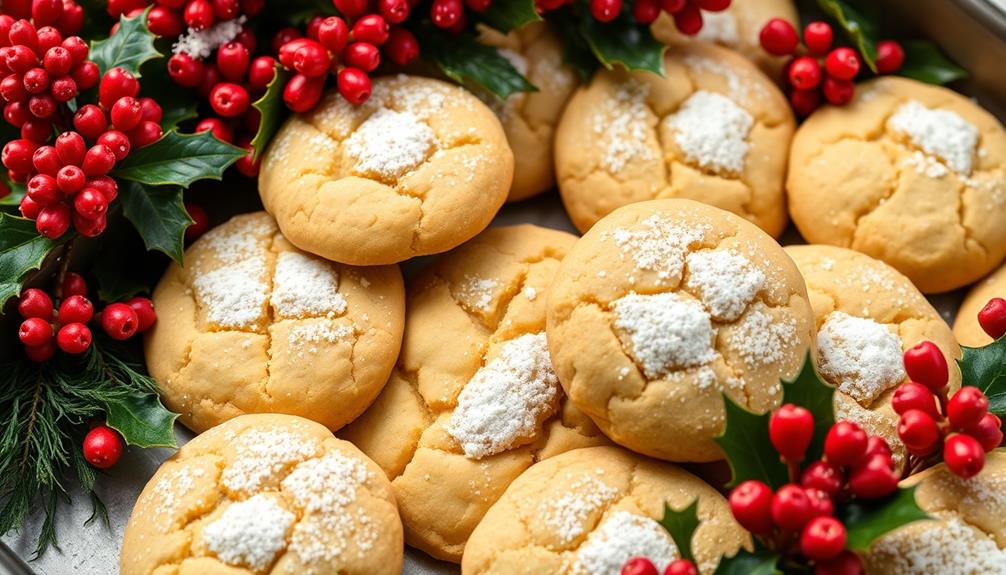
Preheat your oven to 350°F for these delectable Christmas butter cookies.
Next, cream the butter and sugar together until light and fluffy.
Now, gradually mix in the flour until a smooth dough forms.
Roll the dough into small balls and gently press them flat onto your baking sheet.
Let's get these festive cookies ready for the oven!
Step 1. Preheat Oven to 350°F

To begin, preheat your oven to 350°F. This crucial step ensures your Christmas butter cookies bake evenly and develop that irresistible golden-brown color.
As the oven warms, you can gather the rest of your ingredients and prepare your work surface.
Once your oven reaches the perfect temperature, it's time to slide in the cookie sheets. The even heat will work its magic, bathing your dough in toasty goodness.
You'll know the cookies are ready when they've puffed up slightly and the edges have turned lightly crisp. The center should still be soft and tender, just begging to melt in your mouth.
Don't forget to set a timer – you don't want those delectable treats to overcook!
With the oven preheated and ready to go, you're one step closer to serving up a batch of Christmas cheer. Soon, the inviting aroma of freshly baked butter cookies will fill your kitchen, making mouths water in anticipation.
Step 2. Cream Butter and Sugar Together
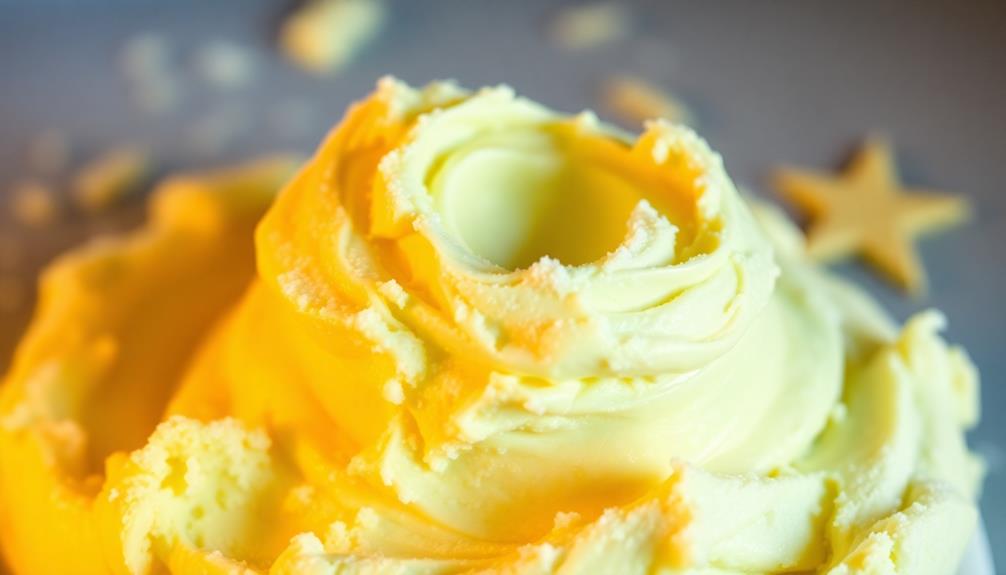
Creaming the butter and sugar together is a crucial step in crafting your Christmas butter cookies. This technique blends the two ingredients until they're light and fluffy, creating a smooth, creamy base for the rest of your cookie dough.
First, grab your softened butter and granulated sugar, then use a hand mixer or stand mixer to beat them together for 2-3 minutes. You'll notice the mixture transform from grainy to smooth and creamy as the sugar dissolves into the butter.
Be sure to scrape down the sides of the bowl periodically to ensure even mixing. This aeration process introduces tiny air pockets that will result in a melt-in-your-mouth texture once your cookies are baked.
With the butter and sugar properly creamed, you're one step closer to enjoying the buttery, sweet flavor of your homemade Christmas cookies. Get ready to delight your family and friends with these festive treats!
Step 3. Add Flour and Mix Well
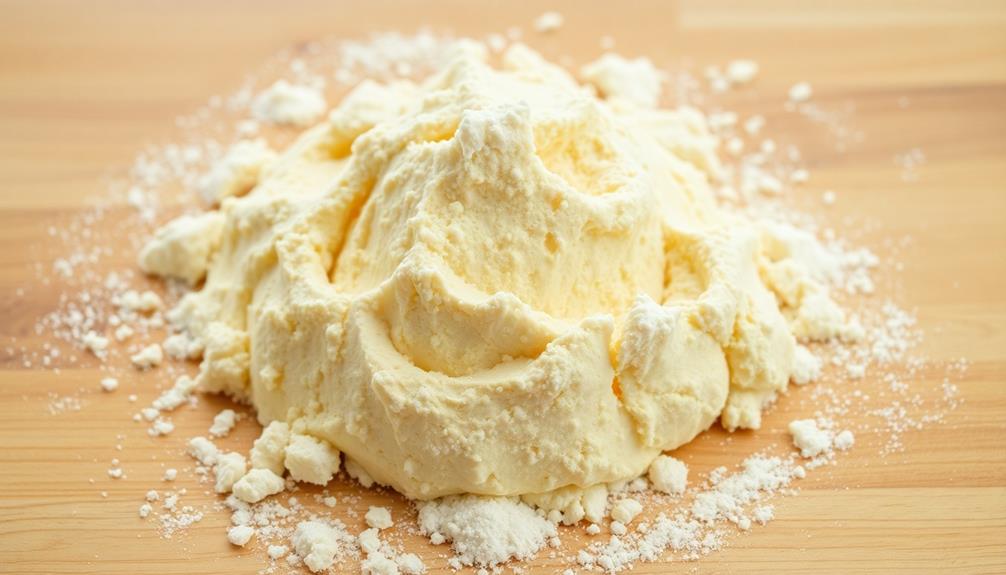
With the butter and sugar creamed to perfection, it's time to add the flour. Grab your bowl of creamy, luscious goodness and slowly sprinkle in the all-purpose flour. Gently incorporate the flour, mixing until a soft dough forms. Remember, using high-quality butter can enhance the flavor profile of your cookies, as it provides essential fatty acids and fat-soluble vitamins butter nutritional information.
Don't overmix – you want to stop as soon as the ingredients come together.
Now, the fun part! Knead the dough lightly on a lightly floured surface, shaping it into a smooth, cohesive ball. Wrap it in plastic wrap and pop it in the fridge to chill for at least 30 minutes. This resting period allows the gluten to relax, making the dough easier to work with when it's time to roll and cut.
Once chilled, your dough is ready to transform into delightful Christmas cookies. Preheat the oven, line your baking sheets, and get ready to create edible holiday magic.
With the flour incorporated, you're one step closer to biting into a buttery, melt-in-your-mouth delight. Let's keep going – the cookie cutters are waiting!
Step 4. Roll Dough Into Balls

After chilling the dough, you'll want to roll it into balls. This is a crucial step that will give your Christmas butter cookies their classic, festive shape.
The richness of higher fat content in butter enhances the flavor, making these cookies even more delightful. Grab a small spoonful of the chilled dough and gently roll it between your palms, forming a smooth, round ball. The dough should be cool to the touch, making it easy to work with.
As you roll, apply gentle pressure to ensure the balls hold their shape. Place each dough ball onto a parchment-lined baking sheet, spacing them about an inch apart. This will allow the cookies to spread slightly as they bake, creating that lovely, buttery texture.
Once you've rolled all the dough into balls, you're ready to bake your delicious Christmas treats. The anticipation will be building as the aroma of freshly baked butter cookies fills your kitchen, promising a delightful holiday experience.
Step 5. Press Cookie Dough Flat
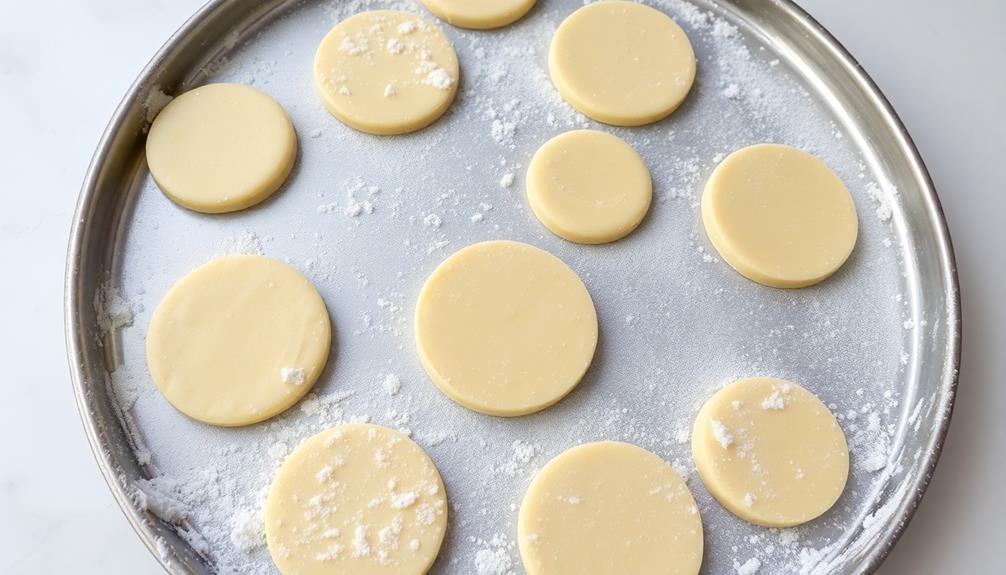
Next, press each dough ball flat using the palm of your hand. Gently apply pressure, flattening the ball into a round, even disc about 1/4 inch thick. As you press, the dough will spread out, creating a smooth, uniform surface. Feel the satisfying texture as the soft dough gives way beneath your fingertips.
Once flattened, the cookies will be ready to transfer to your prepared baking sheets. Arrange them with plenty of space between, as they'll expand a bit during baking.
This pressing step is crucial, ensuring your Christmas butter cookies bake up perfectly – not too thick and not too thin, but just right. The flattened discs will puff up slightly, forming delightful little pillows of buttery goodness.
With each press, you're one step closer to an irresistible batch of holiday treats. Keep going until all the dough has been transformed into beautiful, ready-to-bake cookie rounds.
Final Thoughts
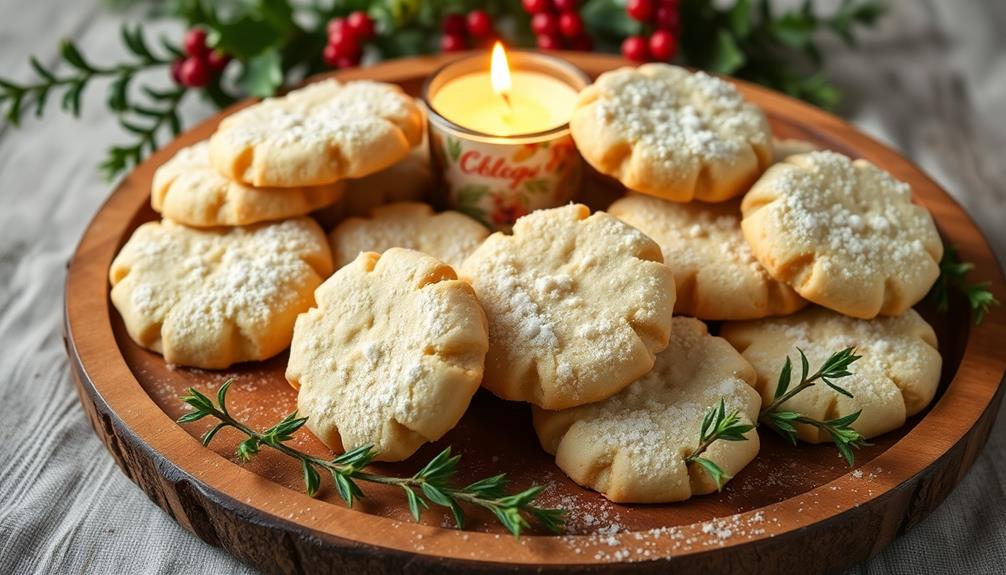
These Christmas butter cookies have been a delightful treat to create and enjoy. The festive shapes and delicate flavors make them a must-have for the holiday season.
As you admire the beautifully decorated cookies, you can't help but feel a sense of pride and accomplishment. The process of rolling, cutting, and baking these buttery delights has been a labor of love, but the end result is well worth the effort.
Now, as you take that first bite, the rich, creamy texture and the burst of sweetness on your tongue are sure to delight your senses.
These cookies aren't just a dessert – they're a culinary work of art that captures the true spirit of Christmas. So, savor each crumbly morsel and share them with your loved ones, creating lasting memories and traditions that will be cherished for years to come.
Frequently Asked Questions
Can I Use Salted Butter Instead of Unsalted Butter?
Yes, you can use salted butter instead of unsalted, but you'll need to adjust the amount of salt in the recipe. Start with a smaller amount and taste as you go to ensure the perfect balance.
Do I Have to Chill the Dough Before Baking?
Chilling the dough before baking is recommended to help the cookies hold their shape during baking. It firms up the dough, making it easier to work with and preventing excessive spreading in the oven.
How Long Do the Cookies Last After Baking?
Freshly baked cookies will typically last 3-5 days when stored in an airtight container at room temperature. For longer shelf life, you can freeze the baked cookies for up to 3 months.
Can I Freeze the Baked Cookies for Later Use?
Yes, you can freeze the baked cookies for later use. Freeze them in an airtight container or zip-top bag for up to three months. When ready to enjoy, simply thaw them at room temperature.
Do I Need to Use a Cookie Cutter for Shaping?
You don't necessarily need to use a cookie cutter for shaping the dough. You can simply roll it into balls or shape it into logs and then slice it into rounds. Get creative with your cookie shapes!
